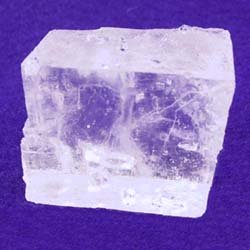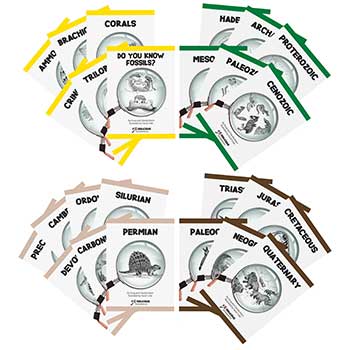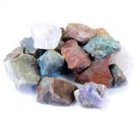Sign up for Lesson Plans, discounts & more!
What is a mineral?

What is a mineral? These are the characteristics of minerals followed by a brief explanation of each characteristic. Remember minerals have a different definition than rocks. (see What Is a Rock)
A mineral:
- Is naturally occurring
- Is a solid (at room temperature)
- Is inorganic (mostly)
- Has a fixed chemical formula
- Has an orderly crystalline structure
Let’s look at these one at a time.
Naturally Occurring
To be considered a mineral it must have
been formed by natural geologic processes. Laboratory created gems
(synthetic diamonds, rubies, etc.) don’t count.
A Solid
By definition, minerals are solid within the normal temperature ranges of the earth’s surface.
Inorganic
Generally, a mineral is a naturally occurring solid with a crystalline structure.
This is where it gets a little tricky.
Halite or table salt is a mineral. Sugar is a crystalline solid but comes from plants, sugar cane or sugar beets. This classifies it as an organic compound and so is not a mineral. Coal on the other hand also comes from plants (organic) and is generally considered a mineral.
There are also marine animals that make their shells from calcite (calcium carbonate). Calcite is a mineral but since it is secreted by animals to form shells it is inorganic. Geologists generally consider this inorganic calcite a mineral.
What is a mineral? It has a fixed chemical formula
Each
mineral has a particular chemical make up. While most minerals are
compounds of two or more elements, some minerals are made up of a single
element. Gold, silver and copper are called native elements and occur
in nature in relatively pure form.
The vast majority of minerals are compounds or mixtures of elements. These mixtures are consistent. For halite, the chemical formula is NaCl or sodium chloride. Each sodium atom is combined with one chlorine atom. The formula for Quartz is SiO2, silicon oxide. For every atom of silicone, there are two atoms of oxygen.
There are about 4000 known minerals on earth. Each one is a unique substance with its own chemical formula. Most of these are very rare.
That narrows down the field quite a bit.
There are only eight groups of minerals that are common. They are:
What is a mineral? It Has an orderly crystalline structure
Minerals
have an orderly crystalline structure. This means that the atoms or
ions that make up a mineral are arranged in an orderly and repetitive
manner.
What is a mineral? See examples here.

INTERESTED IN MORE? IF SO, YOU MAY WANT TO CHECK OUT OUR OTHER SITES:
fossilicious.com - Our online fossil and mineral rock shop.
fossils-facts-and-finds.com - An educational site about fossils.













